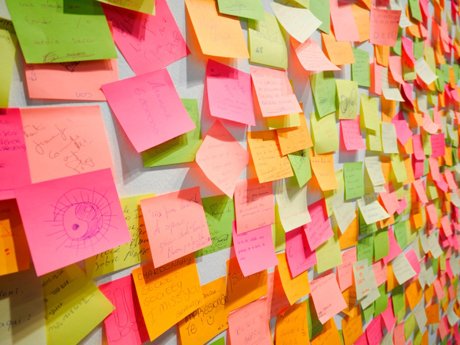Resource:How to Introduce Design Thinking to Students in INDIA
We recommend you use the WikiTextEditor, which allows you to make simple sections using equal signs as such. Just simply click on Edit Page, then above the menu, click [Show WikiTextEditor] and you'll be able to create nice, neat, organized pages.
Contents
Overview
“Design thinking is an iterative approach to problem-solving that intentionally seeks out people with different perspectives, knowledge, skills, and experience and has them work together to create a practical solution to a real-world problem.”While interacting with Siddhartha Mondreti about his efforts at his college “Godavari Institute of Engineering and Technology”, he highlighted the enormous opportunities that can come from practising design thinking and used his knowledge of design thinking through and affect the change in the engineering curriculum.
WHAT IS DESIGN ?
The design process is what puts Design Thinking into action. It’s a structured approach to generating and developing ideas.
The five phases of the design process:
EMPATHISE
“I have a challenge.How do I approach it?”
Empathizing is central to the design thinking process. It highlights the significance of listening to the requirements and wants for a particular challenge.
INTERPRETATION
“I learned something. How do I interpret it?”
Interpretation transforms your stories into meaningful insights.Throughout this process your perspective will evolve and change, you get a clear understanding of what your observations mean and how you can relate them to your challenge and use them as inspiration.
IDEATION
“I see an opportunity.What do I create?”
The main aim of the Ideation stage is to use creativity and innovation in order to develop solutions.
PROTOTYPE
“I have an idea. How do I build it?”
This step deals with building the ideas and checking for their feasibility to arrive at the final solution.
TESTING
“I tried something.How do I evolve it?”
Testing, in Design Thinking, involves generating user feedback as related to the prototypes you have developed, as well as gaining a deeper understanding.
INTRODUCING DESIGN THINKING TO INDIAN STUDENTS AND BENEFITS
The present scenario of education in India is mainly focused on rote learning and thus scoring high marks. We find a scarcity of multidisciplinary career options to opt for. Till today paper assignments are given to students for evaluating their academic performance in schools.The students here are facing problems to enhance their creativity and find success in the fields chosen out of their interest due to lack of a constructive approach towards it. We have lot more things to change.
For all of this “Design Thinking” can kick start the process of change.Because Design thinking in the context of a country like India can play a very significant role in finding appropriate solutions to its problems. Design by its own nature is creative, collaborative and is inclusive of many other fields. The methodology of how design is learned by hands on experience can make a difference to the process of learning.Design can help students develop values, attitudes, sensorial skills and critical thinking and make the students realize their creative and innovative potentials. Design thinking can make a big difference to the expected growth of creative needs in India.
BUT HOW?
The first step would be making the students to think of what challenges they are surrounded with and pick one to solve, regardless of it's intensity. This can happen through making effective communication with the people regarding the challenge and knowing their needs.This process involves knowledge gathering, analysis, discovery, and conceptualization.
Their ideas should be based on the picture for the future. Students can pave the way for thinking by surrounding themselves in places that are conducive to thinking and learning and things that inspire them.After this intensive thought process and collection of information, they should get to know the visual impact of the ideas through viewing it practically and pen down what’s in mind. Then all the interpreted data should be brainstormed resulting in a creative solution for the challenge chosen.After having a perfect solution in hand students must design a prototype for it so that they rectify further any complications with ease by getting feedback, because working on a prototype proves very cost effective, before jumping into the end product.
Before all, Students must be prepared to face the failure actually they should enjoy their failures. Because it hones their creativity and the end results of facing the failure would be very beneficial to them.
